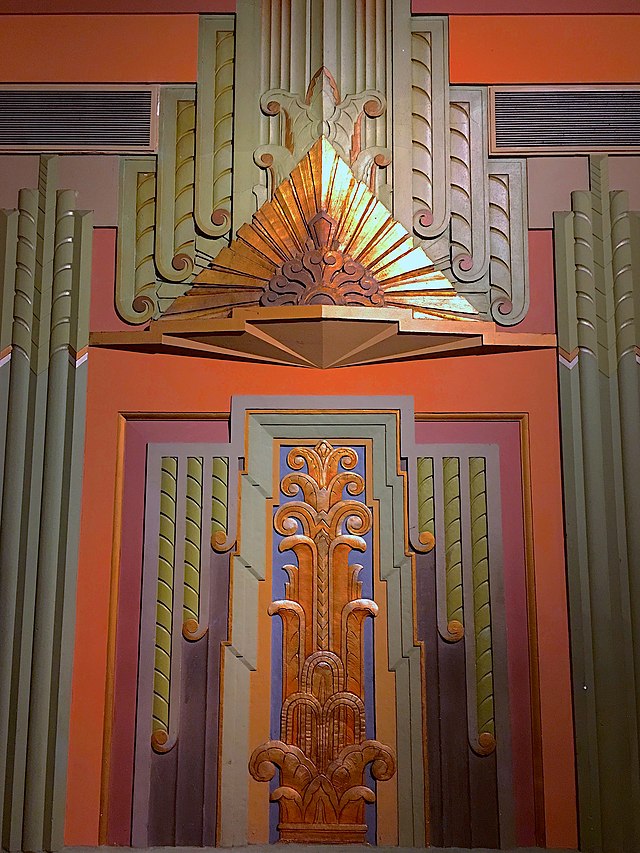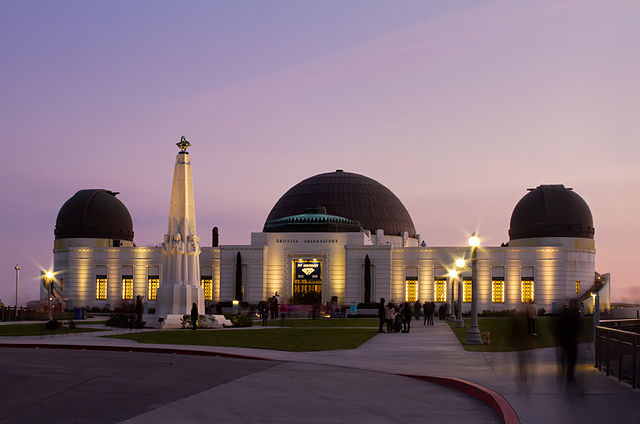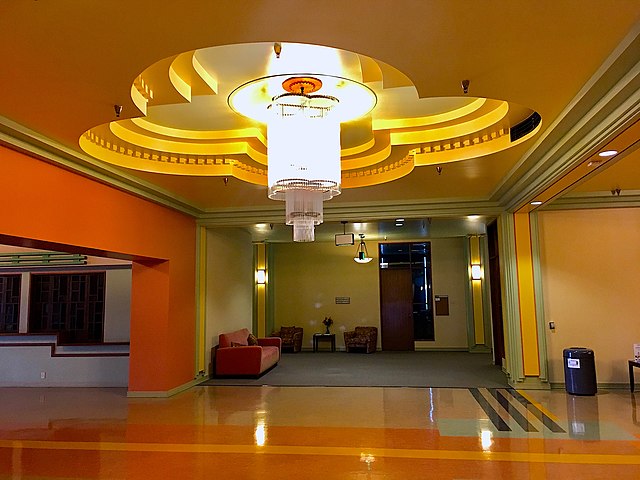Featured image credit: Antoine Taveneaux
The Roaring Twenties didn’t just get their name from the din of the jazz bands. Everything was louder: the personalities, the fashion, and even the architecture. A lot of that visual flair can be attributed to a style that had been gaining popularity in France since around 1910. Today, we know it as Art Deco. Seeking to marry contemporary tastes to a higher standard of craftsmanship and materials, it was the perfect complement to a time rife with prosperity. But all good things must end. In our latest Los Angeles Architecture 101, we take a closer look at Art Deco architecture. As is the case with so many styles, the story begins far away and long ago.
Update 06/13/23:
If you’re curious about Art Deco’s impact globally, you may want to take a trip to Brussels this year. The city is currently engaged in a year-long festival celebrating the closely related Art Nouveau movement. Financial Times recently reported on the festival, including a few homes that adopt a decidedly Art Deco style: Spoiler: they were included in the festival regardless.
The Seeds of an Art Movement Sowed in Stoclet Palace

While it’s difficult to pinpoint when and where the first seeds of Art Deco were planted, Art Deco architecture found inspiration in a collective called the Vienna Secession. The movement, officially formed in 1897, numbered noted architect Josef Hoffman among its roster. Art historians widely consider his designs for Brussels’ Stoclet Palace to set an early template for Art Deco architecture.
One glance at the structure clarifies the basic, crisp cubic shapes with unyielding strong lines so characteristic of the style. Other hallmarks of the forthcoming Art Deco style ornamented Stoclet Palace. There was elegant symmetry, meticulously sculpted decoration, and even art nouveau mosaics courtesy of renowned artist Gustav Klimt. Stoclet Palace was completed in 1911, nearly a decade before Art Deco architecture would spread throughout the U.S.
Concrete’s Fluid Motion Forward
Technological breakthroughs were also central to the forward momentum of Art Deco architecture. Chief among them: the introduction of reinforced concrete into construction.

François Coignet made history in an unassuming Parisian suburb in 1853 when he built the first home from concrete. In 1877, Joseph Monier helped to perfect this technique by adding patterned iron rods for structural reinforcement. August Perret tested the limits of this new method in 1893 by erecting the first concrete garage.
By 1913, artisans and construction crews had built enough confidence in reinforced concrete that it was used to create the legendary Théâtre des Champs-Élysées.With its use of complex and mesmerizing geometric patterns, it’s a true monument of Art Deco architecture.
By introducing reinforced concrete, French architects could forgo support columns for more liberty in their designs. But the advancements kept coming. For example, easier ways of mass producing plate glass allowed for larger, more robust panes at a lower cost. The mass production of aluminum also opened up new opportunities in crafting window frames and general structure.
Art Deco Takes Over France

The Art Deco movement hit new zeniths of cultural significance when the legendary school École royale gratuite de dessin, originally established in 1766 under the direction of King Louis XVI, officially changed its name to the École nationale des arts décoratifs.
If you don’t speak French, it may seem insignificant to you. But an established school founded under a king to teach fine arts actually changed its name to suit a specific style of art. And if you haven’t already connected the dots, “arts décoratifs” was the name of the movement that we in the U.S. would eventually recognize as Art Deco.
Surprisingly, the term “Art Deco” was likely not used in print until 1966, decades after the decline of the style. The name first gained traction in 1925 after Art Deco works were showcased in Paris as part of the Exposition internationale des arts décoratifs et industriels modernes. A show including several Art Deco pieces was held in Paris in 1966, entitled Les Années 25 : Art déco, Bauhaus, Stijl, Esprit nouveau. It was a review of the show by journalist Hillary Gelson, printed in The Times later that same year, that identified characteristic work as “Art Deco.”
Art Deco Architecture Arrives in Los Angeles

Art Deco may have started in France, but within a decade or so, it had become a global art movement. In the United States, Art Deco architecture initially manifested in designs for ornate, geometrically beautiful skyscrapers. The climate was a bit different in Los Angeles, where skyscrapers were outlawed by the city’s 1904 structural height limitations.
In those days, Los Angeles was an oil town. But that was rapidly changing. The city was becoming a mecca for the burgeoning silent movie scene.
Between the oil boom and the polishing of the silver screen, LA’s population doubled in less than a decade. By 1919, nearly half of Los Angeles residents lived in Downtown LA. It was considered an adult Never Never Land of excess. Booze flowed, glamor was intuitive, and there was money to burn.
The Cinematic Influence on LA’s Art Deco Architecture
By the time silent films gave way to the talkies, Los Angeles had fully embraced Art Deco architecture. The movement had picked up steam in the late 1920s and continued through its peak into the early 1940s. Though this was a relatively short period in LA history, Art Deco has left a mark you can still enjoy today. The style’s celebration of glamor, opulence, and eccentricity had a special poignance in a city that elevated celebrities to earthbound deities with movie magic.
Therefore, it’s fitting that Art Deco was popularly used in the U.S. to build movie theaters, alongside commercial buildings and travel stations. These decadent structures became their own kind of churches, marrying the Art Deco style with exotic inspiration pulled from current events.
A strong local example exists in Graumann’s Egyptian Theatre. The U.S. was in the grip of Egyptomania in 1922 when the theater was built… the same year that King Tutankhamen’s tomb was discovered. Its symmetrical scarabs and bold frescoes echoed the fervent passion for new discoveries underlying the Art Deco movement.
The Hypnotic Lobbies of Art Deco Structures

But it was rare for Art Deco architecture to limit its lavishness to the exterior. Often the most lavish of presentations was reserved for kaleidoscopic lobbies of vibrant color and daring patterns.
Sometimes, ornate sculptures would be included. Other times, intricate linework and seamless symmetry would contribute to a hypnotic visual overwhelm. But the regal aspects of Art Deco architecture meant that, no matter the expense, there was always enough to go around. And inside.
The Devolution and Decline of Art Deco Architecture
However, the heights of Art Deco architecture couldn’t sustain forever. With the Great Depression hitting the U.S. in 1929 and radiating out to the rest of the world, the majestic, rich materials needed for Art Deco became even more scarce. And the wealthy patrons of the expensive style were growing fewer and further between.

But Art Deco didn’t just shatter across the dilapidated brick wall of the Great Depression. It remained for years, gradually transforming into a more understated aesthetic. The most common offshoot of Art Deco, Streamline Moderne, was basically Art Deco-lite. Still, the basic foundation of Art Deco was alive in Streamline Moderne’s aerodynamic curves.
Yet, when World War II officially began on September 1, 1939, it signaled the death knell for the exotic movement. The sobering reality of war stripped away the fashionable elements until only function remained.
Seeing Art Deco Architecture in the Wild
LA’s Art Deco buildings haven’t always been treated with reverence in the subsequent years since the movement’s decline. Yet, Art Deco architecture was so prevalent in the city that several strong examples remain today. Take yourself on a tour with these notable examples:
- Bay Cities Guaranty Building – 221 Santa Monica Blvd, Santa Monica, CA 90401
- Selig Commercial Building – 269 S Western Ave, Los Angeles, CA 90004
- The Wiltern/Pellissier Building – 3790 Wilshire Blvd, Los Angeles, CA 90010
- Griffith Observatory – 2800 E Observatory Ave, Los Angeles, CA 90027
- Bullocks Wilshire (Southwestern Law School) – 3050 Wilshire Blvd, Los Angeles, CA 90010
- Warner Grand Theatre – 478 W 6th St, San Pedro, CA 90731
- Eastern Columbia Building – 849 S Broadway, Los Angeles, CA 90014
- Los Angeles Central Public Library – 630 W 5th St, Los Angeles, CA 90071
- The Oviatt Building – 617 S Olive St, Los Angeles, CA 90014
- The CalEdison/One Bunker Hill – 601 W 5th St, Los Angeles, CA 90071
- Title Guarantee & Trust Building – 411 W 5th St, Los Angeles, CA 90013
- Los Angeles Jewelry Center – 629 S Hill St, Los Angeles, CA 90014
- Pantages Theatre – 6233 Hollywood Blvd, Los Angeles, CA 90028
- The Deco Building – 5209 Wilshire Blvd, Los Angeles, CA 90036
Read Los Angeles Architecture 101: Googie
Read Los Angeles Architecture 101: Craftsman
Read Los Angeles Architecture 101: Beaux-Arts
Read Los Angeles Architecture 101: Churrigueresque
With a brand that says as much as JohnHart’s, Senior Copywriter Seth Styles never finds himself at a loss for words. Responsible for maintaining the voice of the company, he spends each day drafting marketing materials, blogs, bios, and agent resources that speak from the company’s collective mind and Hart… errr, heart.
Having spent over a decade in creative roles across a variety of industries, Seth brings with him vast experience in SEO practices, digital marketing, and all manner of professional writing with particular strength in blogging, content creation, and brand building. Gratitude, passion, and sincerity remain core tenets of his unwavering work ethic. The landscape of the industry changes daily, paralleling JohnHart’s efforts to {re}define real estate, but Seth works to maintain the company’s consistent message while offering both agents and clients a new echelon of service.
When not preserving the JohnHart essence in stirring copy, Seth puts his efforts into writing and illustrating an ongoing series entitled The Death of Romance. In addition, he adores spending quality time with his girlfriend and Romeo (his long-haired chihuahua mix), watching ‘70s and ‘80s horror movies, and reading (with a particular penchant for Victorian horror novels and authors Yukio Mishima and Bret Easton Ellis). He also occasionally records music as the vocalist and songwriter for his glam rock band, Peppermint Pumpkin.


